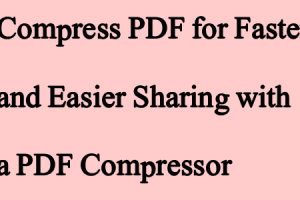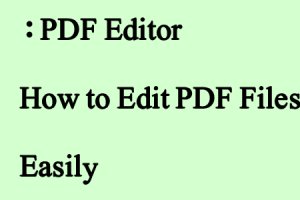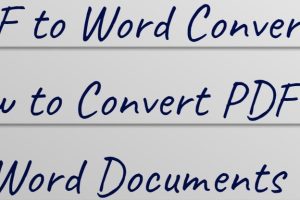If you work with digital images, you may have come across a situation where you need to convert your JPG files into PDFs. JPG is a popular image format, but PDFs have their advantages, such as better compression and the ability to contain multiple pages. In this post, we’ll guide you through the process of converting your JPGs to PDFs, step by step.
What is JPG?
JPG is a popular image format that stands for Joint Photographic Experts Group. It’s a compressed format that can store high-quality images with small file sizes. JPG is widely used for photographs, digital art, and other images that require high-quality visuals.
What is PDF?
PDF stands for Portable Document Format. It’s a file format developed by Adobe that’s widely used for documents, forms, and presentations. PDFs are popular because they’re easy to share and view on different devices, and they can contain text, images, and even interactive elements.
Why Convert JPG to PDF?
1. Better Compression: PDFs can be compressed to a smaller size than JPGs, which can be useful if you need to send or upload your files.
2. Multi-Page Support: PDFs can contain multiple pages, making them ideal for documents and presentations that require multiple images.
3. Accessibility: PDFs are widely accessible, and most devices can open them without the need for special software or plugins.
How to Convert JPG to PDF
There are several ways to convert your JPG files into PDFs, depending on your needs and preferences. Here are some of the most common methods:
1. Online Converter: There are several online tools available that can convert your JPG files to PDFs. Simply upload your files, select the conversion options, and download the resulting PDF. Some popular online converters include Zamzar, Smallpdf, and Adobe Acrobat Online.
2. Adobe Acrobat: If you have Adobe Acrobat installed on your computer, you can use it to convert your JPGs to PDFs. Simply open your JPG file in Acrobat, select “Save As,” and choose PDF as the file type.
3. Microsoft Word: If you have Microsoft Word, you can also convert your JPG files to PDFs. Simply insert your JPG into a Word document, then select “Save As” and choose PDF as the file type.
Tips for Converting JPG to PDF
1. Choose the Right Resolution: When converting your JPG files to PDF, choose the appropriate resolution based on your needs. Higher resolutions will result in larger file sizes, while lower resolutions may compromise image quality.
2. Check the Orientation: Make sure the orientation of your images is correct before converting them to PDF. If the orientation is incorrect, your PDF may appear sideways or upside down.
3. Use Compression: If you need to reduce the file size of your PDF, use compression tools such as Adobe Acrobat’s PDF optimizer or online tools like Smallpdf.
Conclusion
Converting your JPG files to PDFs is a simple process that can have several benefits, such as better compression, multi-page support, and accessibility. There are several methods available, including online converters, Adobe Acrobat, and Microsoft Word. By following our tips and best practices, you can ensure that your converted PDFs meet your needs and expectations. So why not give it a try and see how it can improve your









Add Comment